
In naval terminology, a destroyer is a fast, maneuverable, long-endurance warship intended to escort larger vessels in a fleet, convoy or battle group and defend them against powerful short range attackers. They were originally developed in the late 19th century by Fernando Villaamil for the Spanish Navy as a defense against torpedo boats, and by the time of the Russo-Japanese War in 1904, these "torpedo boat destroyers" (TBDs) were "large, swift, and powerfully armed torpedo boats designed to destroy other torpedo boats". Although the term "destroyer" had been used interchangeably with "TBD" and "torpedo boat destroyer" by navies since 1892, the term "torpedo boat destroyer" had been generally shortened to simply "destroyer" by nearly all navies by the First World War.

A torpedo boat is a relatively small and fast naval ship designed to carry torpedoes into battle. The first designs were steam-powered craft dedicated to ramming enemy ships with explosive spar torpedoes. Later evolutions launched variants of self-propelled Whitehead torpedoes.
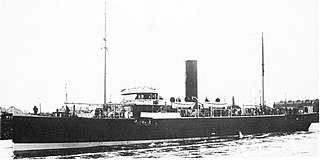
Q-ships, also known as Q-boats, decoy vessels, special service ships, or mystery ships, were heavily armed merchant ships with concealed weaponry, designed to lure submarines into making surface attacks. This gave Q-ships the chance to open fire and sink them. The use of Q-ships contributed to the abandonment of cruiser rules restricting attacks on unarmed merchant ships and to the shift to unrestricted submarine warfare in the 20th century.
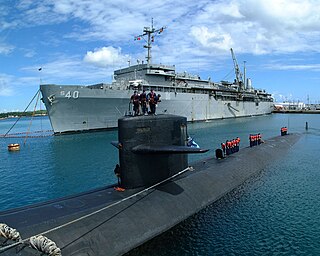
A submarine tender is a type of depot ship that supplies and supports submarines.

HMS Sidon was a submarine of the Royal Navy, launched in September 1944, one of the third group of S class built by Cammell Laird & Co Limited, Birkenhead, named after the naval bombardment of Sidon in 1840. An explosion caused by a faulty torpedo sank her in Portland Harbour with the loss of 13 lives.
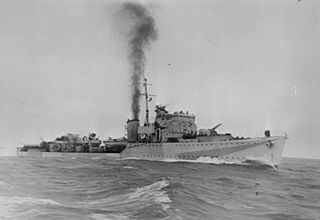
HMS Quorn was a Hunt-class destroyer of the Royal Navy, built in 1940 and sunk off the Normandy coast on 3 August 1944. The class were named after British fox and stag hunts, in this case, the Quorn Hunt, predominately based in Leicestershire.
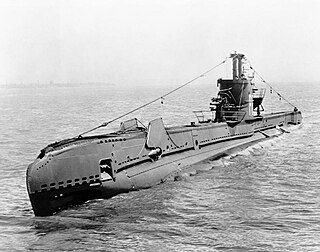
The S-class submarines of the Royal Navy were originally designed and built during the modernisation of the submarine force in the early 1930s to meet the need for smaller boats to patrol the restricted waters of the North Sea and the Mediterranean Sea, replacing the British H-class submarines. As part of the major naval construction for the Royal Navy during the Second World War, the S class became the single largest group of submarines ever built for the Royal Navy. A total of 62 were constructed over a period of 15 years, with fifty of the "improved" S class being launched between 1940 and 1945.
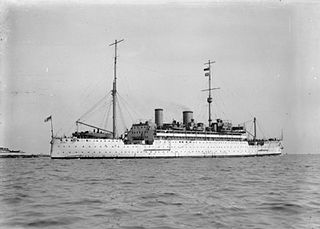
HMS Medway was the first purpose-built submarine depot ship constructed for the Royal Navy. She was built by Vickers Armstrong at Barrow-in-Furness during the late 1920s. The ship served on the China Station before the Second World War and was transferred to Egypt in early 1940. Ordered to evacuate Alexandria in the face of the German advance after the Battle of Gazala in May 1942, Medway sailed for Lebanon at the end of June, escorted by a light cruiser and seven destroyers. Her strong escort could not protect her; on 30 June a German submarine torpedoed and sank her.
HMS C8 was one of 38 C-class submarines built for the Royal Navy in the first decade of the 20th century. The boat survived the First World War and was sold for scrap in 1920.
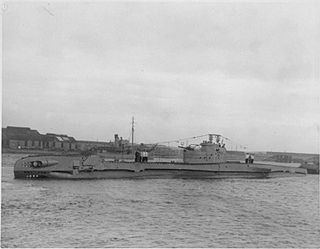
HMS Trespasser was a British submarine of the third group of the T class. She was built as P312 by Vickers Armstrong, Barrow, and launched on 29 May 1942. So far she has been the only ship of the Royal Navy to bear the name Trespasser.

HMS Templar was a British submarine of the third group of the T class. She was built by Vickers Armstrong at Barrow-in-Furness, and launched on 26 October 1942 with the pennant number P316. So far she has been the only ship of the Royal Navy to bear the name Templar, probably after the crusading order, the Knights Templar.
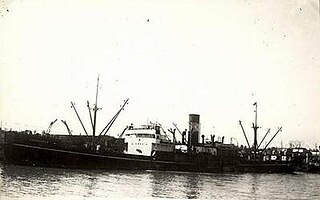
The SS Carsbreck was a British cargo steamship. She was sunk while carrying supplies to the UK in the Second World War.
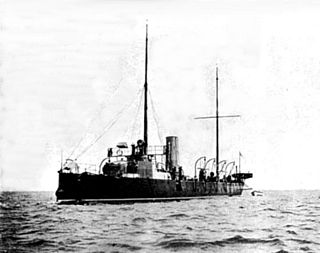
HMS Rattlesnake was a unique design of torpedo gunboat of the Royal Navy. A result of the Russian war scare of 1885, she was designed by Nathaniel Barnaby that year and built by Laird Brothers, of Birkenhead. Quickly made obsolete by the new torpedo boat destroyers, she became an experimental submarine target ship in 1906, and was sold in 1910.

Empire Breeze was a 7,457 GRT cargo ship which was built in 1940 for the Ministry of War Transport (MoWT). Shortly after entering service she ran aground but was repaired. Empire Breeze was torpedoed and sunk by U-176 on 25 August 1942.
Brittany was a 631 GRT passenger ferry built in 1910 for the London, Brighton and South Coast Railway. In 1912 she was sold to the London and South Western Railway, passing to the Southern Railway on 1 January 1923. She was renamed Aldershot in 1933. In 1937 she was sold to an Italian owner and renamed Hercules. On 24 November 1941, she was torpedoed and sunk by HMS Triumph.

Empire Caribou was a 4,861 GRT cargo ship which was built in 1919 for the United States Shipping Board (USSB) as Waterbury. She was sold in 1920 to the American Star Line and renamed Northern Star. In 1923, she was sold to American Sugar Transporters Inc and renamed Defacto. In 1941 she was passed to the Ministry of War Transport (MoWT) and renamed Empire Caribou. On 10 May 1941, she was torpedoed and sunk by U-556.

Empire Cloud was a 5,969 GRT cargo ship which was built in 1940 by William Pickersgill & Sons Ltd, Sunderland for the Ministry of War Transport (MoWT). She was torpedoed on her maiden voyage, but repaired and returned to service. In 1942, she was torpedoed and sank whilst under tow to port.

HMS Elfin was a torpedo recovery vessel built for the Royal Navy. She was built by J. Samuel White & Company, East Cowes, Isle of Wight, was launched on 20 November 1933 and commissioned on 16 January 1934. She was builder's number 1754. Her home port was the Navy's torpedo trials establishment HMS Vernon, and she was based at Portland. A sistership, Redwing, was constructed under builder's number 1753 and was stationed at HMS Defiance, Devonport. Elfin was renamed Nettle during the Second World War, and was later sold for scrapping. She survived in mercantile service, and has been preserved.

SS Shuntien was a 3,059 GRT coastal passenger and cargo liner of the British-owned The China Navigation Company Ltd (CNC). She was built in Hong Kong in 1934 and sunk by enemy action in the Mediterranean Sea with great loss of life in 1941. A Royal Navy corvette rescued most of Shuntien's survivors, but a few hours later the corvette too was sunk and no-one survived.

HMS Salvia (K97) was a Flower-class corvette of the Royal Navy. She was ordered on the eve of the Second World War and entered service in September 1940. She is notable for having rescued many survivors from the sinking of the prison ship SS Shuntien on 23 December 1941. A few hours later, on Christmas Eve 1941, Salvia too was torpedoed. The corvette sank with all hands, and all of the survivors that she had rescued from Shuntien were also lost.

















